

Suunto-blogg
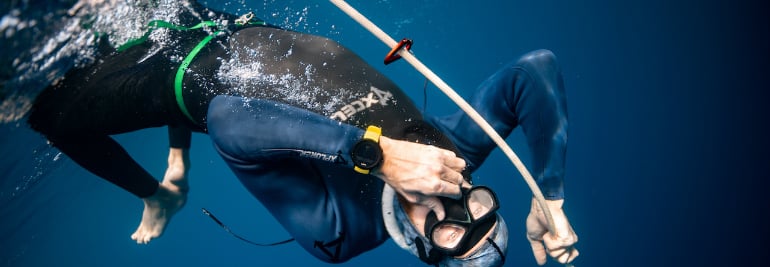
Experience the Blue Element freediving competition
Athletes from across the globe are gathered and ready to go as the third Blue Element fins off in Dominica!
Blue Element kicks off tomorrow for their 3rd event in Dominica. Suunto Dive caught up with one of the founders, Johnathan Sunnex, to find out what it is all about before media manager and freediver Francesca Koe takes over our Instagram feed tomorrow.
Photo by Daan Verhoeven
What is Blue Element?
Blue Element is an international freediving experience that encompasses multiple days of diving, beach clean-ups, island exploration and much more! It is held annually in the picture perfect island of Dominica! Sofia Gomez Uribe and I founded Blue Element freediving in 2016.
This is the third BE competition which was founded in 2016. Hurricane Maria prevented the 2017 edition, but last year the BE team were able to re-establish the event despite the country still being in recovery mode after the hurricane devastation.
The event is held in Soufriere Bay/Scotts Head in the very south of Dominica. Dominica is a small island nation, a part of the Lesser Antilles island chain in the Caribbean.
Why is the location so amazing?
The Soufriere Bay offers world class conditions year round, unlike any other location on earth. The water temperature ranges between 26-30°C, the visibility is between 20-30m and there are no waves, no currents and effectively no depth limit. To add to this, the bay is surrounded by high mountains carpeted with lush tropical jungles creating the perfect backdrop.
The custom built freediving platform is currently set in 160 m and just a five minute swim from shore.
Are you expecting any records?
The Blue Element team pride themselves in creating an atmosphere where athletes can perform at their very best. Dozens of national records and several world records have already been set here over the past four years and we expect this event to be no different!Blue Element 2019 will be attended by 30 athletes from around the world, including many national record holders, vice and world champions. We can expect to see many records fall at this event including national, continental and possibly world records.
What disciplines compete and on what days?
Athletes have the choice to compete in as many or as few of the competitive depth disciplines as they choose. There are six days of diving split into three sets of two. We are expecting 30 athletes to be competing this year and more than 150 official performances.
Have you seen the event grow?
Hurricane Maria was quite a setback and it took a lot to regain momentum. The event continues to grow each year and this year we will have almost three times the number of athletes than attended the inaugural competition.
Photograph by Daan Verhoeven
What can the athletes win?
Suunto D6i’s, Suunto D5’s, carbon blade Alchemy fins and shirts, custom made Elios wetsuits, Octopus nose prize packs, All-Swim swimwear, high end Pacsafe back packs made of recycled fishing nets, ADIDAS shirts, Recycled plastic Blue Element T-shirts, custom medals.
Who are the judges?
Two of the world’s leading judges, Carla Hansen and Vedran Milat.
Who runs the safety team?
Chief of Safety Louisa Collyns of the UK returns to lead our experienced team of safety divers. The safety team have been hand selected and are comprised of several 80-90m divers in their own right.
Will the rules be governed by AIDA or CMAS standards?
AIDA International.
Who is taking the official pictures?
Predominantly the man, the myth the legend, Daan Verhoeven. I will likely join him behind the camera for some session.
Will you have Dive Eye?
Not this year but the event will be covered by our professional media team with event videos and live streaming from the platform. We have cameras placed strategically to get all of the best angles from both above and below the surface! You will be able to catch the live stream from our Facebook page, and the videos will be uploaded to our social media channels. We will also be taking over the Suunto Dive Instagram feed live from the dive platform.
Photograph by Daan Verhoeven
What is your history in freediving?
I have been involved with freediving since 2011. I competed for the first time the same year in Kalamata for the Med Cup and then the AIDA World Championship. I placed somewhere in the middle of the field, but these events and the athletes who were in attendance inspired me to make a full commitment to freediving. I vowed to myself that when I would return I would be there for a podium placing.
I moved to Egypt and I started to teach and train full time. Living next to the ocean mean't I had easier access to depth which allowed me to progress quickly and I made my first dive below 100 m in November of 2012. The following year I returned to Kalamata for the AIDA Depth World Championship and, as I had hoped, this time I managed to place third in free immersion, winning a bronze medal. I ranked third overall for depth diving in 2012 and 2013 with deepest official results of 105 m CWT, 101 m FIM and 65 m CNF set in the Bahamas at Vertical Blue.
After the death of two friends (fellow freedivers) I switched my focus towards coaching and safety diving. I had thoughts about leaving the sport, but I soon realised that that wouldn’t change anything and that I would be better off staying and trying to make the sport safer. I ran safety seminars and returned to Long Island in the Bahamas, this time as the Chief of Safety and co-organiser. I hand selected a group of free divers that I knew would be up to the task of looking after the deepest divers in the world pushing their bodies to the absolute limit. I applied the same mindset to running the safety team to what I had used in my own personal training. We approached safety diving with performance in mind. Team bonding for cohesion, rescue drills and emergency training to sharpen our skills, incident reviews for learning opportunities and to strive for improvement. This approach has since been adopted by many other events and has set the standard for the international freediving community.
Since then, I have coached athletes to more than 70 national and continental records as well as seven world records. I am an instructor trainer with AIDA International and I continue to organise freediving events. I enjoy exploring and documenting the underwater world with my camera, and have dived in all continents, including both polar regions.
Will you compete?
Once the competition is underway and everything is running how it should, then yes, I plan to take off my organizers hat for a few minutes each day to perform some dives!
Photograph by Daan Verhoeven
Any hot tips or words of inspiration you would like to share?
Freediving, like life, is often a trial of tribulations. Success takes patience and persistence but inevitably hard work and determination pays off.
Links:
Photography by Daan Verhoeven
Blue Element Facebook
Blue Element Instagram
Blue Element Website
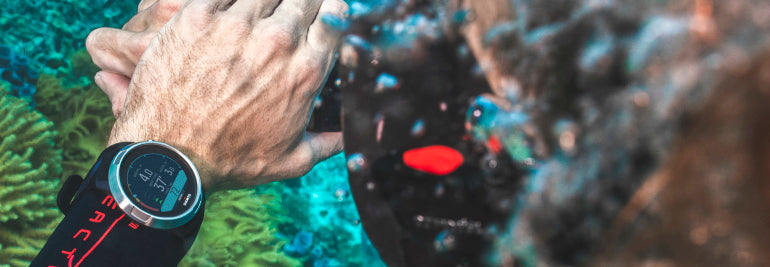
Why I Dive
A team of Suunto divers embarked on an epic journey to the remote islands of West Papua last year to explore the flourishing waters of Raja Ampat. They were amongst the first divers to experience the Suunto D5, and to shared jaw dropping video and images every diver dreams of seeing firsthand.
This marine environment there boasts the richest reefs in the world, and unsurprisingly entices divers from all over the globe to make the journey and discover this paradise for themselves.
Let's explore together!
Why I Dive, film by Janne Suhonen.
Photographer Steve Woods.
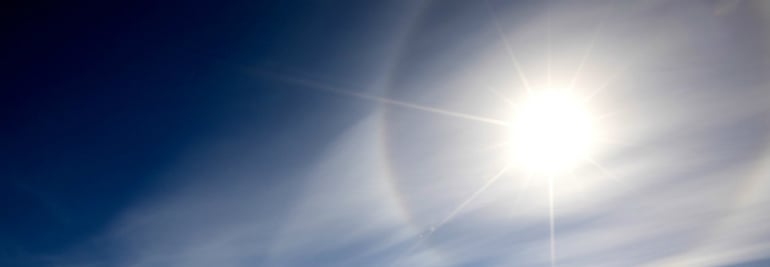
Jill Heinerth Joins Suunto at DEMA 2019
"I have dived and documented climate change firsthand for decades. How we plan for it and adapt to it in the next few years will determine the future of our civilization. That’s what draws me to scuba dive under the ice in the northern reaches of my homeland, Canada.”-Jill Heinerth wrote for the LA Times this week.
Jill Heinerth © Under teh sea ice near Bylot Island
Spending the first half of the year on the Underwater Canada Expedition, Heinerth uses her adventures to connect people to their water planet compelled to demonstrate how their lives impact the source. Jill and her team successfully visited every province and territory in Canada to dive and tell the tales of water from her experiences in each region.
Unstoppable in her plight explorer, cave diver and Suunto Ambassador Jill Heinerth is currently travelling and speaking to audiences and media platforms across Canada and USA on her book tour. Released in August, Into the Planet is a thrilling insight into places inside this earth you may not have imagined existed, that Heinerth has dived while bravely illustrating intense political issues and presenting hard evidence about the impacted ice caps and beyond.
Photo Courtesy of U.S. Deep Caving Team/Wes Skiles. © Diving with the US Deep Caving Team at Wakulla Springs, I felt like I was involved in a space shot. But there is no Mission Control to call for help on a journey that can reach miles into the earth.
With the upcoming DEMA Show fast approaching on the diving event calendar, Suunto Dive are super excited to announce Jill will be joining the Suunto stand to sign copies of her incredible adventures in documenting climate change, cave diving and film making for the past 30 years on 13th and 14th November 2019 in Orlando, Florida. Into the Planet is a riveting account of one of the most dangerous yet exhilarating pursuits in the world.
Jill Heinerth © Ice Formations
“As one of the most celebrated cave divers in the world, Jill Heinerth has seen the planet in a way almost no one has. In a workday, she might swim below your home, through conduits in volcanoes or cracks in the world’s largest iceberg. She’s an explorer, a scientist’s eyes and hands underwater—discovering new species and examining our finite freshwater reserves—and a filmmaker documenting the wonders of underwater life." Into the Pla
Often the lone woman in a male-dominated domain, she tests the limits of human endurance at every tight turn, risking her life with each mission. To not only survive in this world but excel, Jill has had to learn how to master fear like no other.” -Into the Planet by Jill Heinerth
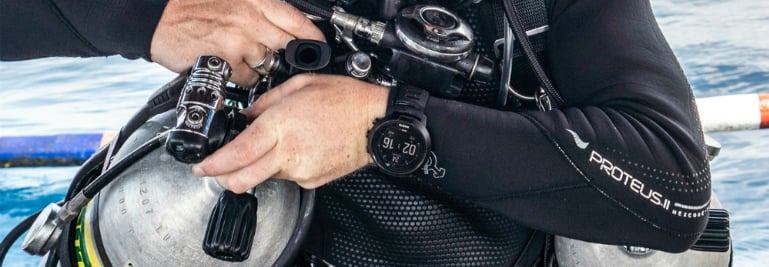
Introducing Alex Kydd
Suunto Dive are super excited to announce Alex Kydd is joining the Suunto Ambassador family. Photographer, marine biologist and diver originally from Melbourne, Australia, Alex now proclaims to being “based on” Ningaloo Reef Western Australia honoring the number of hours that he spends exploring underwater capturing his breath-taking images.
A rare shot of Alex Kydd in front of the camera taken photographer Alfred Minnaarr. ©
Alex trains like an athlete in his discipline. Practising every day, editing all the time and descending beneath the surface has led him to achieve artistry in his images. Alex's photos stand out above the rest with his dedication and passion aiding his continued development as a photographer enabling him to produce his unique shots.
“The ocean is my happy place. Every time you enter the water you never know what you might see and it's such a misunderstood ecosystem. Everything is connected and the more time you spend in it, the more you appreciate.”
Alex Kydd by photographer Alfred Minnaarr ©
Beginning his diving journey with snorkelling at 16 in the cool waters off Melbourne where he grew up, he later began scuba diving on a trip to Thailand in 2009 where he firmly solidified his love and respect for the ocean. Exploring his passion further Alex studied Marine Biology at university and four years ago he started his journey into the world of underwater photography and has had not had a chance to look back.
“At age 16 I first started taking photos. I had a very basic 2m waterproof camera for snorkelling in Melbourne. I progressed slowly to more upgraded cameras over the next few years. Eventually I had enough savings and I got myself a DSLR and housing. I was going out taking 500-1000 photos per day and editing them every night. This I believe, fast tracked me to learn. The best advice I can give for underwater photography is to find a mentor or like-minded people to learn from.”
Alex’s next stops on his extensive adventuring are Raja Ampat, West Papua, French Polynesia and Fiji where he will be exploring with his new dive computers including the Suunto EON Core, Suunto D5 and Suunto Tank POD. Alex’s favourite device at the moment is the Suunto D5. He also represents Fourth Element and Ocean Positive as a team diver.
Alex Kydd:
Instagram

Tested by Real World Divers
Well known now for his higher-level training of professional and technical divers, along with a wealth of experience Johan began life in Netherlands and completed his first dive in Tunisia with CMAS in 1996.
Immediately impressed he purchased all his own equipment and rose to instructor level in a short time. He concentrated on specialising so he could broaden his knowledge which is where Johan developed his passion. After diving on the wrecks in the North Sea he found his calling and continued training in wreck diving and Trimix so he could explore deeper sites that hadn’t had their treasures pillaged like the wrecks at shallower depths.
“At greater depths I found the wrecks were more intact. I am talking about wrecks 80 meters and these wrecks are less exposed and also in better condition because they are not so exposed as those at shallower depths.”
Johan de With selfie.
To help him explore even more depth, his dive training led him onto rebreathers. He realised the limitation of many of his open circuit dives was the number of cylinders he could carry it seemed only natural for him to transition from open circuit.
“In 2015, together with Markku Diedrich, I dived a world record mixed team in Lake Thun, Switzerland (fresh, cold water) I was on OC and Markku on CCR where we travelled to a depth of 166.5m.”
Recording of the team’s deepest dive in a book of records.
Johan’s deep accolades do not end there.
“On the rebreather I dived into caves to a depth of 14m.
On open system in the caves up to 103m.
On the rebreather in open water up to 183m.
Open water on open system 166.4m.”
Johan now works as commercial diver and an instructor at the only private institute of commercial professional diving in the Netherlands. He also teaches deep technical diving and has his own gas filling station, Techduikschool Nederlands.
An important part of his diving is communicating information to the dedicated team of Dive Engineers at Suunto HQ as he puts computers to the test in the field and ensures they meet strict performance targets.
The information Johan feeds back allows the engineers to improve and fine tune devices allowing for the best user experience and in turn lets divers focus on the action and rely on their robust companions in the toughest conditions.
In action training professional divers in the Netherlands.
“I dive and test a lot for Suunto and share as much information as possible and give feedback about these computers both positively and negatively. I currently dive with the EON Steel and the EON Core and with the also since its release, the Suunto D5.
I use this during all my dives both OC in open water and caves and CCR in open water and in caves. As a backup I have my bottom timers with wet-note, and a spare computer in my pocket.
Everywhere and always, even with commercial diving I take the Suunto D5 into the water. I do this so that I also have a digital log of all my commercial dives.”
Suunto Dive computers stand the test of these extreme adventures alongside Johan.
Johan is not just an Ambassador for Suunto Dive, he represents brands including Ursuit and Bare drysuits, Tecline, Ammonite for lighting and Paralenz to capture the action on camera also with great satisfaction and pride.
"Regardless of environment depth or length of the dive or type of dive OC or CCR, technical diving must be feasible for everyone regardless of their financial status. These are brands that certainly think of the customer with price quality. I notice these companies listen and do a lot with the feedback given by us as Brand Ambassadors and testers of these materials.”
Jyri Vehmaskoski, Suunto EON Steel product team: "You don't dive if you don't trust your equipment. Everything we build is tested by real-world divers like us. Our gear is functional, accurate, and built to take a beating – and has hundreds of test dives to prove it."
Learn more about Suunto Dive products at suunto.com
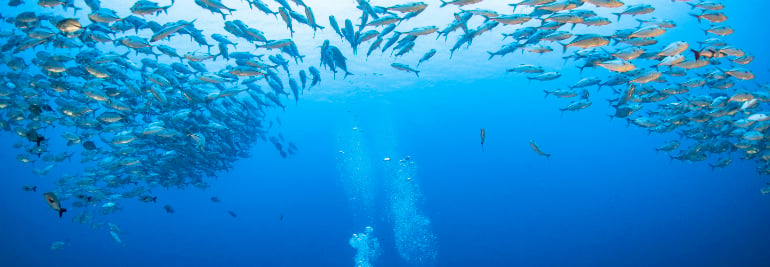
Changing the World from Behind the Camera
Steve Woods has amassed stacks of content illustrating his experiences underwater including thousands of photos that represent the true devastation of the human impact on our natural world. Through his photographic artistry he has successfully utilized his talent to tell the world this sad story that everything is not OK and we need to initiate change.
The Driving Force
Steve’s dedicated parents drove for hours across the UK so that they would be able to make their son’s dreams come true, they would take him to any shark exhibition they could locate until one day, there was to be a real shark on display. He was on the edge of his seat, apprehensive, and excited about what he was going to see. On arrival Steve rushed to find the shark only to be confronted with a papier maché model instead.
Unperturbed by the severe disappointment, the young wildlife enthusiast did not give up his quest to see a real shark.
© Steve Woods Photography
Steve began diving at nine years old and with his family and qualified alongside his parents and two sisters in Turkey when he was twelve.
“When I was a kid I used to watch old VHS documentaries, I had three or four of them that I collected over the years, relics from birthday and Christmas celebrations gone by I would view them over and over until they tapes wore too thin to play. At any chance I could I would beg my parents to take me down the local garden centre that had an aquarium inside to see the ragged tooth and the grey nurse sharks. I would sit there for hours just watching it slowly doing laps around and around the tank,” reminisces Steve.
Fifteen years later he saw the shark he had been dreaming of.
The Journey
Steve spent his early career working in journalism in the UK driven by a deep seated desire to change the world and make it a better place. Steve grasps the importance of illustrating the issues we face as a community and wants to reach people who perhaps have a lesser understanding of the impact of their everyday actions. During his journalist years he committed a lot of time uncovering the detrimental aspects of fish farming and fisheries and spent time underwater to see how the problems could be managed and minimised.
The 2008 shark experience Steve had in Indonesia stayed with him and he soon found himself burning his savings on new camera equipment, securing a one way ticket to Indonesia and leaving the world of British journalism far behind for a life of adventure and to use his photography skills to help protect the oceans.
Once he arrived in Lombok he took up work with local dive centres and photographed guests on their diving adventures so they could take home cool memories from their dive trips. The experience was valuable as it gave him a deeper understanding of how to capture light in water and the technicalities of shooting stills under the sea in order to capture the powerful and clear images he does today.
Soon he found himself involved in setting up a shark conservation foundation alongside a team of local groups and conservation projects called the Gili Shark Foundation.
© Steve Woods Photography
Gili Shark Foundation
“We began photographing sharks, we thought they were all the same as did the community. When we started identifying them we noticed there were many more than we initially thought there were. Gili Shark Foundation was a great way to get the whole island working together. Everyone was involved in shark counts, events and data collecting.” Steve had achieved what he set out to do by using his passion to highlight nature and the human impact.
After a successful time in the Gili islands he moved to Raja Ampat to continue working in conservation. Plastic is prevalent in remote areas, as well as most other environments and Raja is experiencing the same issues. Steve worked with the local communities to show them how to start and maintain effective conservation efforts in areas that have potential. The key to successful conservation projects is longevity with a clear plan for the future.
“The only way to change the human habits it by educating an involving the local communities. If you go in and rule over a population then it is an imperialistic act. When we came to Raja, the locals were well aware the plastic waste was increasing and that fish stocks were decreasing. We worked together to come up with a plan that would enhance their lives and make them more money.” Steve says.
Looking back on his career so far, he talks of many memorable moments working underwater including humpback whale, shark, manta encounters but he considers the smaller experiences that really stick with you as a photographer and as a human.
“Originally when we set up the shark foundation we were rescuing sharks from fisherman in Bali and then we got permission from the government to release them into a fishing projected area in Lombok. First time I had ever done anything like this. We completed research, spoke to people and made plans. Collected the animals and sent them off on a fast boat to be released into water. Who knows if they were going to survive, but we had given them a chance.” Steve says.
Three months later they identified that same shark by the dot pattern in the skin. Steve acknowledges this is a small achievement while 200-400 million sharks slaughtered every year, but this moment struck a chord and the feeling has stayed with him.
More and more he uses his photography working alongside marine conservationists to support their work and he hopes to grow this reach and increase the impact.
© Steve Woods Photography
The Future
“Visual language is so important nowadays, if people know they can change their minds.” Ask Steve how he will change the world in the future, he will tell you “one step at a time”.
© Steve Woods Photography
Suunto took five lucky competition winners of the trip to Raja Ampat on the Suunto D5 photo shoot, they were dive instructor Rosie Sheb'a from Australia, student Niko Lekhraj from Singapore, outdoor guide Anders Vestergård from Denmark, designer Xiaomo "Momo" Wang from China and nature activist Lilian Ellevog from Norway. See them diving in Suunto D5 images and videos.





























































